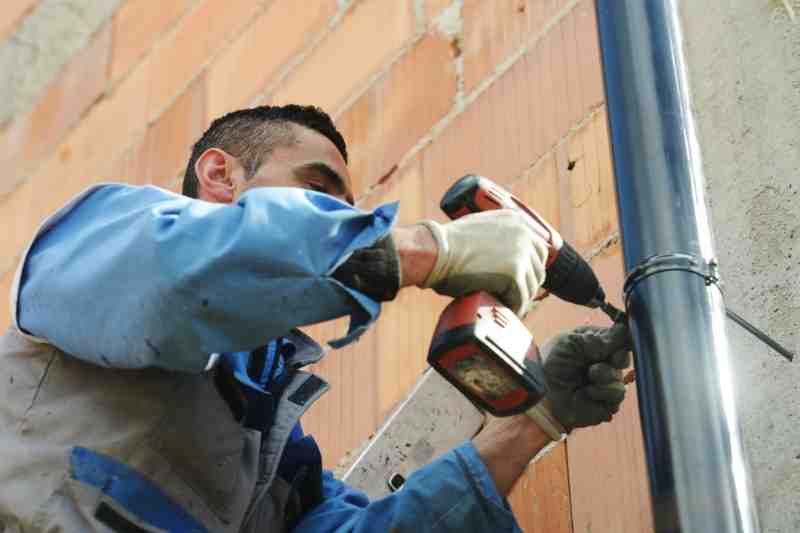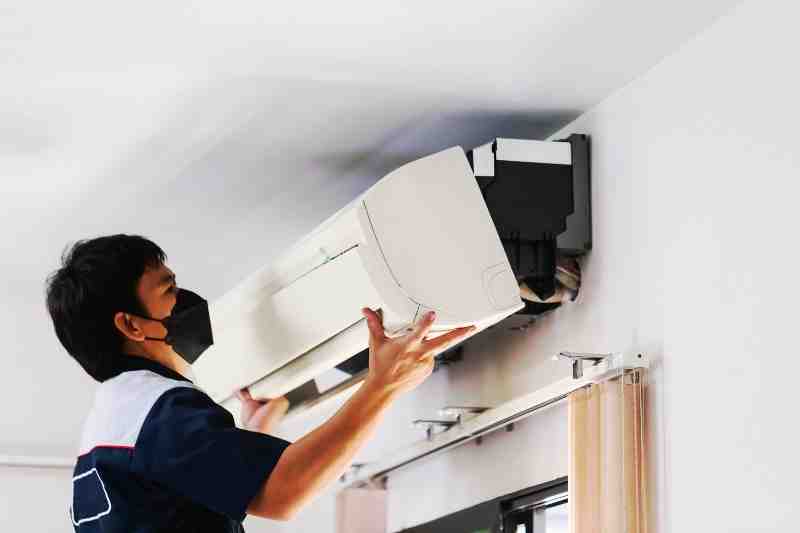Key takeaways
- A building management system is a way for you to oversee and adjust different parts of your building, like heat, lighting, and security.
- The best building management systems integrate with other proptech solutions to give you control over more than just infrastructure.
- The top five building management system providers are Honeywell, Yardi, MRI Software, Utopi, and BuildingLink.

All the work that goes into managing a multifamily property can be enough to make your head spin. At any given time, you have to juggle multiple tasks — and whether you’re filing a maintenance request or handling your property’s financials, the slightest misstep might result in a negative experience for your tenants. But here’s how a building management system can ensure that never happens.
In this post, we explain what a building management system is and why you should use one. Then, we give you some options by listing the top five building management systems.
This post covers:
- What is a building management system (BMS)?
- How does a BMS work?
- Why use a building management system?
- 5 best building management systems
What is a building management system?
A building management system (BMS) is a platform that automates and streamlines building operations, allowing you to manage every part of your building’s infrastructure from one place.
It’s important to note that building management systems may also be called building control systems (BCS) or energy management systems (EMS/EMCS). Regardless of the phrase, the system is the same at the core.
That said, BMS software typically focuses on your building’s physical and infrastructural needs. However, in recent years, the experience and comfort of building occupants has also become essential. For that reason, many building management systems integrate with other technologies for centralizing management, such as lease administration software or energy management systems.
Building management systems help you manage crucial building systems, like:
- HVAC
- Lighting
- Electric
- Water supply & plumbing
- Financials & accounting
- Alarm systems
- Access control
- Security systems
What is an example of a building management system?
A real-world example of implementing a building management system is at The Edge, an office building in Amsterdam. Known as one of the smartest buildings in the world, The Edge uses a highly integrated BMS to manage lighting, heating, cooling, and security systems.
The building utilizes thousands of sensors to monitor everything from humidity to light levels, adjusting systems to enhance energy efficiency and occupant comfort. As a result, the system has contributed to The Edge’s reputation as one of the most sustainable office buildings globally.
Watch how ButterflyMX works:
How does a BMS work?
A building management system connects various subsystems, such as HVAC, access control, and plumbing, through a centralized platform.
This is typically achieved using a network of Internet of Things (IoT) devices—sensors and controllers—that collect data from different building parts. The collected data is then processed and analyzed to optimize performance and efficiency before being displayed through a user interface.
For example, temperature sensors can communicate with the HVAC system to maintain optimal indoor conditions, adjusting temperature and humidity based on the number of people in the building. Motion sensors collect data on building occupancy levels, which also enables lighting controls to help conserve energy.
Overall, most BMS property management software is monitored and managed remotely, providing real-time insights and control. That way, remote capabilities aid building managers in adjusting the system regardless of where they’re located.
Why use a building management system?
Building management systems allow you to:
- Reduce expenses
- Monitor in real-time
- Keep occupants comfortable
- Simplify management
- Sustain environments
Reduce expenses
When it comes to maintenance and utility costs, building energy management systems allows you to save money on both. Building management systems measure how your building’s infrastructure is doing and notify you if they detect a problem.
Dealing with a burst pipe is never fun — and in the worst case, the inconvenience costs you tenants. But a BMS can notify you if it detects something is about to go wrong, giving you plenty of time to address the problem yourself. And it can even shut your systems down automatically in case of imminent failure.
And utility-wise, a building management software’s network of sensors can help you save money in various ways. For example, a building can save thousands per year on its lighting systems alone. Building management systems might depend on smart glass that can detect how much sunlight is coming through windows. After all, a room that’s already lit with sunlight doesn’t need additional lighting, so you can save on your energy bills!
As another example, motion sensors can detect whether there are people in a room and automatically turn the lights off after a certain amount of time. So, you enjoy peace of mind knowing that your property is always choosing the most efficient path — and if you can save this much by addressing lighting alone, imagine how much you’ll save by streamlining other systems, too.
Monitor in real-time
A significant advantage of a BMS is its ability to provide real-time monitoring. In other words, you can oversee various aspects of your building’s operations as they happen.
For instance, sensors placed throughout the building can report data on temperature, humidity, occupancy, and energy usage to a central dashboard. Therefore, you and your staff can quickly identify and respond to issues immediately, such as an equipment malfunction.
Above all, the best BMS software is accessible via mobile app. Remote capabilities ensure you and your staff can access and adjust systems from anywhere, maintaining optimal performance and efficiency.
Keep occupants comfortable
Use your building management system to connect with maintenance staff and receive automatic notifications to ensure that nothing slips through the cracks. In turn, you’ll provide a more comfortable and safer environment for building occupants, such as employees or residents.
Here’s a concrete example:
As a building manager, you must closely monitor air quality to prevent mold and tenant health problems. Without a building management system, you’d have to buy testing equipment and fine-tune your HVAC systems to deliver optimum air quality and CO2 levels.
But here’s what happens when you use an automated building management system. HVAC systems can run their own tests and do their own work to keep air quality high. And because an automated HVAC system doesn’t depend on manual fine-tuning, it can adjust and keep tenants comfortable by choosing the most efficient options in real-time.

Simplify management
Once, property management meant doing a lot of manual data entry. Adding a tenant to an access control system or filing invoices and other financial transactions was a tedious, hours-long process that wasted valuable time.
But today’s building management processes turn administrative tasks into one-click operations that save hours of time and effort. The best building management systems now offer cloud-based dashboards that allow you to manage your property from anywhere, even off-site.
For example, a robust front desk station simplifies manual administrative tasks by empowering you to review live video, speak with visitors, and authenticate guests directly from your computer. What’s more, if your front desk station is integrated with an access control solution, like a video intercom, you can unlock any door or gate by pressing a single button from the front desk station.
Depending on technology to administer your property gives your management style a more human, personalized touch! Every hour you don’t have to spend filling out forms by hand is an hour you can use to delight tenants.
Sustain environments
Sustainability is a key benefit of modern building management systems. After all, the real estate industry makes a significant impact on the environment. So, by optimizing energy use and monitoring resource consumption, a BMS can significantly reduce your building’s carbon footprint.
For instance, automated systems adjust heating, cooling, and lighting based on occupancy patterns, ensuring resources are used only when necessary. Moreover, detailed analytics on energy use, water consumption, and waste help you identify areas for improvement, which helps save on costs and comply with green building standards.
5 best building management systems
If you’re interested in purchasing a building management system, here are five options that may suit your property.
Some of the best building management systems include:
1. Honeywell Niagara Framework
You might consider Honeywell’s Niagara Framework if your property already incorporates smart technology. Tridium Incorporated created the Niagara Framework to give property managers an easy way to set up a building management system.
Tridium was acquired by Honeywell in 2005, and today, the Niagara Framework is the foundation of many versatile building management tools that you can mix and match to fit your building’s needs.
The Niagara Framework is specially designed to make integrating different parts of your building easier. You may already have smart technology in your building, but two different devices might run on entirely different operating systems. Niagara makes it easier for installers and security integrators to connect different systems and create an integrated building management system out of existing components.
2. Yardi Pulse
Yardi Pulse is a proptech company offering other property-specific management solutions.
Anant Yardi founded Yardi in 1982. Its other offerings include property management software packages like Yardi Voyager and Yardi Breeze.
Voyager and Breeze are intended for properties of different sizes. In addition, Yardi offers other software solutions for specific types of properties, like senior housing, multifamily, and commercial properties. Yardi can use their existing software packages to take a more personal approach, building a custom management property system that fits the needs of your property.
3. MRI Software
Founded in 1971, MRI Software is a proptech and property management automation mainstay. MRI Software boasts integrations with dozens of other property software and hardware providers.
By focusing on integrations, MRI Software ensures that installers can spend less time figuring out how to connect separate systems — and that property staff can more easily manage their system.

4. Utopi
Utopi is a BMS specializing in environmental, social, and corporate governance (ESG) principles and sustainability.
By featuring a unique, in-house sensor, Utopi distinguishes itself from other building management systems. While many building management systems today depend on IoT sensors to get their information, Utopi makes sensor installation and maintenance easy by offering a proprietary, battery-powered sensor that you can easily retrofit into an existing property.
Read the full Utopi review »
5. BuildingLink
BuildingLink was founded in 1999 and has since expanded across the United States. In addition to standard infrastructural monitors, BuildingLink offers other software products that focus on keeping residents and staff happy. They offer virtual board meeting software and a resident portal that residents can use to pay their bills and submit requests.
Read the full BuildingLink review »

Get your free quote!
Fill in the form below, and we'll email you right back.
Want a free quote?
Fill in the form below, and we'll email you right back.
You’ll be redirected shortly...






